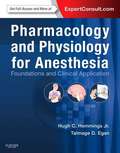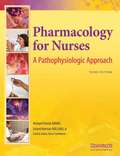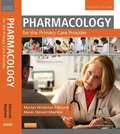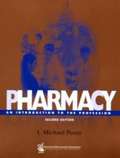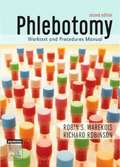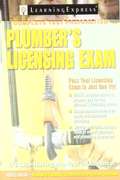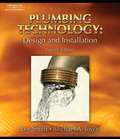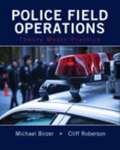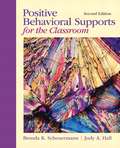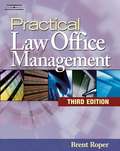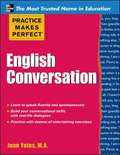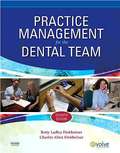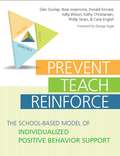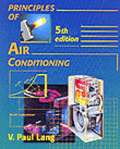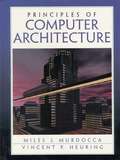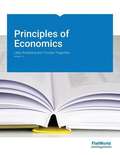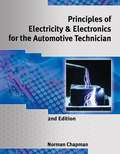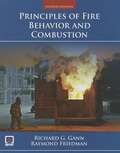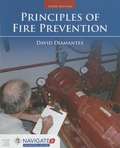- Table View
- List View
Pharmacology and Physiology for Anesthesia
by Hugh C. Hemmings Talmage D. EganBetter understand the complexities of pharmacology and physiology relevant to your practice with the brand-new medical reference book, Pharmacology and Physiology for Anesthesia. Drs. Hugh Hemmings and Talmage Egan provide the clinical insights you need to effectively administer anesthesia, ensuring patient safety and the most optimal outcomes. Access comprehensive, continually updated research on the physiology of organ systems and clinical topics in the pharmacology of anesthetic drugs. Quickly and easily reference the information you need through user-friendly tables, figures, and algorithms, all presented in lavish full color throughout. Understand the molecular mechanism of drug actions and identify key drug interactions that may complicate anesthesia with dedicated sections on these key areas. Search the text and download images online at Expert Consult. Build a thorough knowledge of pharmacology and physiology focused on clinical practice
Pharmacology for Nurses: A Pathophysiologic Approach (3rd Edition)
by Michael Patrick Adams Leland Norman Holland Jr. Carol Q. UrbanThe third edition of Pharmacology for Nurses: A Pathophysiologic Approach has been thoroughly updated to reflect current pharmacologic drugs and processes. This book is structured to present pharmacology and pathology together, so students can more easily grasp the interrelationship between these subjects and patient care.
Pharmacology for the Primary Care Provider, Fourth Edition
by Marilyn Winterton Edmunds Maren Stewart Mayhew Stephen M. SetterWritten by and for nurse practitioners, and also suitable for physician's assistants, this edition focuses on what you need to know to safely and effectively prescribe drugs for primary care.
Pharmacy: An Introduction to the Profession
by L. Michael PoseyAs editorial director of the APA, Posey updates his 2003 textbook introducing not the technical aspects of pharmacy, but the nature of the profession itself. It supplies core knowledge needed to put information from other courses into perspective, and is best supplements with lectures from pharmacy faculty or administrators. Revisions are based on student and instructor feedback, as well as changes in the profession and recent publications. American Pharmacists Association books are distributed by McGraw-Hill. Annotation ©2009 Book News, Inc., Portland, OR (booknews.com)
Phlebotomy Worktext and Procedure Manual (Second Edition)
by Richard Robinson Robin S. WarekoisThe book provides a complete introduction to the practice of phlebotomy in all its aspects.
Plant and Soil Science: Fundamentals and Applications
by Rick ParkerThis book combines the basic knowledge of plant and soil science, in an easy to read and teach format, and provides practical real world application for information learned. Organized into twenty-eight chapters, each chapter features learning objectives, key terms, tables, charts, illustrations and color photographs to aid the learning and teaching process.
Plumber's Licensing Exam
by Learningexpress StaffWhether you're just starting out in the plumbing trade or are a seasoned veteran looking for career enhancement, successful completion of the plumber's licensing exam is an important step in your career. Comprehensive and in-depth, Plumber's Licensing Exam provides: - Review of the technical expertise you'll need, such as key terms, plumbing codes, general regulations on bathrooms, kitchens, and more, water heater installation, venting, traps, sanitary drainage, and more - Thorough familiarization with the plumbing codebook so you know where to find the answers to questions during the test - Hundreds of multiple-choice questions based on the actual exam - Guidelines for each state's requirements licensing - And much more!
Plumbing Technology: Design and Installation
by Lee Smith Michael A. JoyceIntroduces readers to all aspects of the commercial and residential plumbing trade, including home building. Safety practices are emphasized throughout. Projects provide opportunities for hands-on plumbing practice and actual application. Coverage includes basic knowledge, threaded pipe, waste systems, water systems, heating water, special cases, and fixture installation. This third edition covers current plumbing codes, and adds new pedagogical features. Useful for plumbers preparing to pass the Master Plumber exam. Annotation c. Book News, Inc. , Portland, OR (booknews. com)
Police Field Operations: Theory Meets Practice
by Cliff Roberson Michael L. BirzerPolice Field Operations: Theory Meets Practice, 2/e is a comprehensive, readable text that presents a practical look at police field operations and is designed to be used in one-semester courses on police operations or patrol procedures. Chapters have been designed to be independent units that can be taught individually, but also build upon each other to provide a complete picture of police operations. The text cover all major areas of police operations including patrolling, investigations, crime mapping, community policing, hot pursuit issues, communications, gangs and drugs, and more. Discussions focus on issues and challenges that police officers face on the job and help students bridge the gap between theory and practice.
Positive Behavioral Supports for the Classroom
by Brenda K. Scheuermann Judy A. HallThe field of positive behavioral intervention and support is expanding rapidly, and the revised and reorganized second edition of Positive Behavioral Supports for the Classroom reflects the newest research and most exciting advances. With a new emphasis on the three-tier response-to-intervention model, the text continues to deliver readers an array of research-based strategies and techniques for strengthening appropriate behaviors and reducing challenging ones. Tackling both the "hows" and "whys" of behavioral management in the classroom, this text combines theory and practice in a way that helps students understand and apply effective strategies for behavioral support, assessment, and intervention in both school-wide settings and on an individual basis.
Positive Child Guidance (Seventh Edition)
by Darla Ferris MillerPositive Child Guidance, Seventh Edition is ideal for guidance, behavior management and discipline, and classroom management courses in an early childhood education curriculum. This practical book outlines workable steps for creating a cooperative, respectful community of children and adults with special emphasis on sensitivity to cultural needs, cultural differences, and developmentally appropriate practice.
Practical Law Office Management (3rd Edition)
by Brent RoperPractical Law Office Management, third edition focuses on law office management from a practical standpoint. Designed for the paralegal student interested in day-to-day law office management topics, this text focuses on client relations and communication skills; legal fees, timekeeping, and billing, client trust funds and law office accounting; calendaring, docket control, and case management; legal marketing; and file and law library management. This revised edition offers an extended focus on technology, including a full demonstration of Thomson's ProLaw software and in-depth software tutorials. It includes up-to-date charts and graphs that present material in an easy-to-understand context. Each chapter now includes thought-provoking questions, and expanded and interesting case studies that deal with unique facts specific to practicing paralegals appear after most chapters. To expand the technology focus of the text, Excel exercises appear in the timekeeping and billing and trust account chapters. In addition, this revised text has a strong ethics focus throughout, with ethics-related cases included at the end of nearly every chapter.
Practice Makes Perfect: English Conversation
by Jean YatesLearn how to speak English fluently and spontaneously Practice Makes Perfect: English Conversation gives you helpful instruction on correct pronunciation, grammar, syntax, and word usage, keeping in mind the typical problems of non-native English speakers like you. Each section includes a series of exercises that gives you extra practice in using new concepts and encourages you to construct personalized conversations. The lessons will reassure even grammar-phobic learners that you can achieve a confident speaking style. Offering a winning formula for getting a handle on speaking English right away, Practice Makes Perfect: English Conversation offers: Engaging dialogues illustrate practical conversational situations Example phrases or sentences clarify each point A variety of exercises for practice, with an answer key that provides instant feedback and reference Practical and high-frequency vocabulary used throughout
Practice Management for the Dental Team (Seventh Edition)
by Betty Ladley Finkbeiner Charles Allan FinkbeinerThis book gives a broad overview of the dental business operations and also elaborates on how to set up the business office and select staff, equipment, and supplies to maintain this vital part of the practice.
Prevent-Teach-Reinforce: The School-Based Model of Individualized Positive Behavior Support
by Glen Dunlap Rose Lovannone Carie English Donald Kincaid Kelly Wilson Kathy Christian Phillip StrainSolve serious behavior challenges in K-8 classrooms with this easy-to-use book, the first practical guide to the research-proven Prevent-Teach-Reinforce (PTR) model. Developed by some of the most respected authorities on positive behavior support, this innovative model gives school-based teams a five-step plan for reducing problems unresolved by typical behavior management strategies. With this thorough blueprint for PTR, education professionals will learn how to prevent behavior problems by adjusting the curriculum and environment; teach proactive communication skills; and reinforce prosocial behavior and academic achievement. This highly successful model is proven effective by research and field testing in real classrooms PTR was shown to reduce behavior problems and increase evidence of social skills and academic engagement detailed and explicit, with five systematic steps that take educators beyond tips and strategies (see box) consistent with the popular positive behavior support approach and derived from the principles and many procedures of applied behavior analysis easily adaptable to the needs and goals of each individual student effective for a wide variety of students: typically developing students and those who have autism, learning disabilities, intellectual disabilities, emotional and behavioral disorders, and other challenges On the included CD-ROM are all the printable forms and tools needed to implement PTR, such as Behavior Support Plan templates and a Functional Behavioral Assessment. With this comprehensive model, education professionals will resolve even the toughest classroom behavior challenges and remove a significant barrier to effective teaching and student achievement.
Principles & Practices of New Jersey Real Estate (19th Edition)
by Frank W. Frank W. KovatsThe economic importance of real estate today demands a higher professional level for all persons dealing in real estate, with an increased emphasis on educational requirements. Also, every state requires that a person engaging professionally in the real estate business, either as a broker or as a salesperson, must be licensed, and in each case, a state examination is a prerequisite for a license. Principles and Practices of New Jersey Real Estate has been written to serve as an educational guide for students and for persons desiring to take New Jersey's real estate licensing examination, as a quick reference for those already in the profession, and for use by the many other professionals dealing with various aspects of real estate.
Principles of Air Conditioning (5th Edition)
by V. Paul LangThis proven text, now in its fifth edition, covers the fundamental principles of refrigeration and air conditioning. The material is intended to help learner develop practical skills required in all areas of A/C applications; design, installation, sales, & service. The technical information presented is fundamental to all types of domestic & commercial systems.
Principles of Computer Architecture
by Miles J. Murdocca Vincent P. HeuringDesigned especially for undergraduates in computer-related disciplines, with emphasis to support the compiler, operating system, and networking courses. For a first course in computer architecture or computer organization. This text covers computer architecture at the instruction set architecture (ISA) and system design levels. Starting with foundation material on data representation and computer arithmetic, the book moves through the basic components of a computer architecture, covering topics at increasing levels of complexity up through CISC, network architecture, and parallel architecture. the authors have adopted the use of a SPARC-subset for an instructional ISA called "ARC" (A RISC Computer), which is carried through the mainstream of the book, and is complemented with platform-independent software tools that simulate the ARC ISA as well as the MIPS and x86 (Pentium) ISAs.
Principles of Economics Version 2.0
by Libby Rittenberg Timothy TregarthenIn the macro chapters of Version 2.0 of Principles of Economics thoroughly incorporates the recent recession and recovery-- placing it in historical and theoretical context and not shying away from the controversies surrounding how government responded to it. In the micro chapters, all the time-sensitive data has been updated, along with over half of all the "Start Ups" and "Case and Point" applications being brand new or updated. Flat World Knowledge is thrilled to publish a re-launch of Tim Tregarthen's acclaimed Principles of Economics V. 2.0 book, and proud to bring Tim's remarkable talents as a teacher to future generations of students.
Principles of Economics v 1.1
by Libby Rittenberg Timothy TregarthenVersion 1.1 boasts improved coverage throughout the text including significant updates to: Chapters 20 (GDP, Price Level Changes, Business Cycles, and Unemployment) Chapter 21 (Measuring Total Output and Income) Chapter 27 (Government and Fiscal Policy) Chapter 32 (Macroeconomics for the 21st Century).
Principles of Electricity and Electronics for the Automotive Technician (2nd Edition)
by Norm ChapmanPrinciples of Electricity & Electronics for the Automotive Technician, 2E thoroughly covers the basics of automotive electricity and electronics to fully prepare beginning technicians for more complex electrical concepts. Written by an ASE Master Technician and teacher, the book draws readers in using a combination of basic theory, case studies, hands-on vehicle tasks and ASE-style review questions. The updated second edition includes expanded coverage of hybrid electrical vehicles and safety procedures, technological advances in electronically controlled vehicle accessories, and new troubleshooting techniques using cutting-edge equipment and procedures. Simple illustrations and wiring diagrams, along with straightforward explanations of how automotive electricity and electronics work, act together to make this an ideal introduction to electrical and electronics diagnostics and service.
Principles of Fire Behavior and Combustion (Fourth Edition)
by Richard G. Gann Raymond FriedmanThis expanded edition addresses all the course objectives and learning outcomes for the National Fire Academy FESHE Model Curriculum Associate's (Core) course called Fire Behavior and Combustion.
Principles of Fire Prevention, Third Edition
by David DiamantesThe Third edition of Principles of Fire Prevention covers the National Fire Academy's Fire and Emergency Services Higher Education (FESHE) associate level Fire Prevention Course. The Third Edition provides a comprehensive and concise overview of the history and philosophy of fire prevention, the agencies and organizations involved in the field today, and the regulatory aspects and functions associated with plan review inspection, fire protection systems testing, and fire investigation. It also covers the elements of public education and community risk reduction as well as the logistics or record keeping, staffing and financial management, so that readers are fully prepared to plan implement, and lead successful fire prevention program.
Principles of Macroeconomics
by Libby Rittenberg Timothy TregarthenFlat World Knowledge is honored to publish a new, first edition re-launch of Tim Tregarthen's wonderful principles of macroeconomics book, and proud to bring Tim's incredible talents as a teacher back to life so future generations of students can continue to learn from him. In 1996, he published the first edition of his principles of microeconomics textbook to great acclaim, and it became widely used in colleges around the country. That same year, MS made him wheelchair-bound. The disease forced his retirement from teaching at the University of Colorado at Colorado Springs in 1998. He lost the use of his arms in 2001 and has been quadriplegic ever since. Tim never let his disease get him down. In fact, he turned back to his love of writing and teaching for inspiration. He obtained a voice-activated computer, recruited a co-author, Libby Rittenberg of Colorado College, and turned his attention to revising his principles of economics book. Today we are excited to introduce Libby Rittenberg and Timothy Tregarthen's Principles of Macroeconomics. The authors teach economics as the study of "choice " by providing students with an accessible, straightforward overview of economics. This text combines the clarity and writing of Tregarthen's seminal periodical "The Margin" with great teaching insights. Rittenberg and Tregarthen help students to understand how real individuals actually work with economics. In this new book, the authors illustrate the practicality and relevance of economics with a variety of new illustrations and insights. The authors take a three-pronged approach to every concept: (1) the concept is covered with a "Heads Up" to ward off confusion, (2) a "You Try It" section makes sure students are staying on top of the concept and (3) a "Case and Point" section that uses a real-world application to harness the concept in reality. For one example of how this plays out in the text see "Chapter 3, Section 2 on Supply".here This book is intended for a one-semester course in Macroeconomics taught out the social sciences or business school.
Principles of Management
by Talya Bauer Mason Carpenter Berrin ErdoganPrinciples of Management by Carpenter, Bauer and Erdogan teaches management principles to tomorrow's business leaders by weaving three threads through every chapter: strategy, entrepreneurship and active leadership. Strategic: All business school teachings have some orientation toward performance and strategy and are concerned with making choices that lead to high performance. Principles of Management will frame performance using the notion of the triple bottom-line the idea that economic performance allows individuals and organizations to perform positively in social and environmental ways as well. The triple bottom line is financial, social, and environmental performance. It is important for all students to understand the interdependence of these three facets of organizational performance. The Entrepreneurial Manager: While the General Management course at Harvard Business School was historically one of its most popular and impactful courses (pioneered in the 1960s by Joe Bower), recent Harvard MBAs did not see themselves as general managers. This course was relabeled 'The Entrepreneurial Manager' in 2006, and has regained its title as one of the most popular courses. This reflects and underlying and growing trend that students, including the undergraduates this book targets, can see themselves as entrepreneurs and active change agents, but not just as managers. By starting fresh with an entrepreneurial/change management orientation, this text provides an exciting perspective on the art of management that students can relate to. At the same time, this perspective is as relevant to existing for-profit organizations (in the form intrapreneurship) as it is to not-for-profits and new entrepreneurial ventures. Active Leadership: Starting with the opening chapter, Principles of Management show students how leaders and leadership are essential to personal and organizational effectiveness and effective organizational change. Students are increasingly active as leaders at an early age, and are sometimes painfully aware of the leadership failings they see in public and private organizations. It is the leader and leadership that combine the principles of management (the artist's palette, tools, and techniques) to create the art of management. Cases: Mason provides brief cases in his Instructors Manual for those who take a case approach to the course or who wish to incorporate cases. This book's modular format easily maps to a POLC course organization (Planning, Organizing, Leading, and Controlling, attributed to Henri Fayol (1949, General and industrial management. London. Pitman Publishing company), and suits the needs of most undergraduate or graduate course in Principles of Management.
